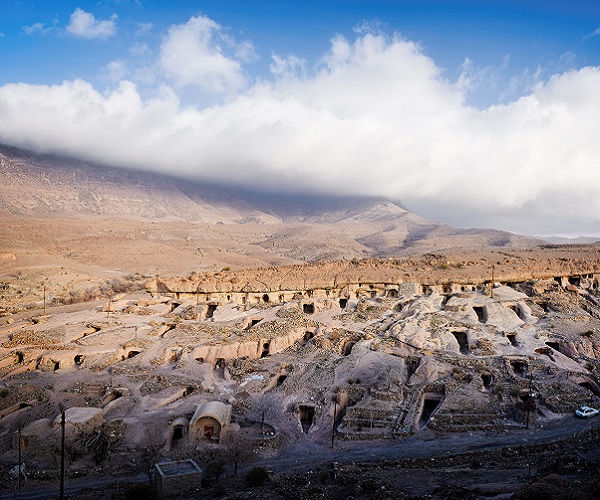
Abyaneh Village Natanz (Red village) : Things to do in Abyaneh
Imagine walking in Walt Disney’s animated fictional village or town. How exciting can it be! Rather than imagining it, travel to charming Abyaneh to realize it. You ask me how? Lend an ear! Abyaneh Village or “Red Village” in Isfahan province is an extraordinary Iranian village approximately 87 km south of Kashan. The village is not a typical village! Abyaneh traditional village is particularly special in that it looks red in color and the way the villagers are dressed up reminds you of cartoon characters. This astounding terraced village is situated on a hillside and features stunning red houses. Abyaneh Village, as a living museum, houses relics from the Sassanid era (224–651 AD) to the Qajar era (1789-1925 AD) and exhibits 1500 years of Iranian history. Don’t miss this magical village on your road trip from Kashan to Isfahan.
Contents

Why Visit Abyaneh Traditional Village
- Abyaneh Traditional Village showcases 1500 years of Iranian history and embraces remnants of Sassanid and Qajar Empires.
- The red houses on the hillside make this astounding terraced village a magnet for tourists.
- The snail-shaped design of the village with clay, stone, and mud brick houses is stunning.
- Several Zoroasterian (an ancient Persian religion) rituals take place in the village.
The Story of Abyaneh Village Iran
Locals called the village Viona. The word Vi in their dialect means willow and the word Viona refers to a willow forest. Since Abyaneh used to be a willow forest, locals called their village so. No clear evidence is at hand about the age of the village. However, word has it that the village dates from Medes era (7oo BC). Locals identify themselves with Yazdi dialect as well as Zoroasterian religion. In particular, they still perform some zoroasterian rituals and ceremonies.
The Structure of Abyaneh Traditional Village
Interestingly, the village exhibits no dead-end alleys due to its snail-shaped architecture. Fantastic houses in the terraced village of Abyaneh are built on the hillside so that the roof of one house simultaneously functions as the yard of another house. The delightful architectural elements of the houses such as Orsis (sash windows), Iwans (an enclosed space with one end entirely open), and wooden Tarems (Plant Climbing Scaffold) are appealing to visitors. The vernacular architecture of the village is also noteworthy. Specifically, the houses exhibit clay facades. Indeed, the locals extracted the clay from a nearby clay pit. Since there was not plenty of space for houses on the hillside, each family had to dig a cave-like storage with small doors into the nearby hills. They could store their food as well as nonessential household articles and keep their livestock in those storerooms.

Villagers And Life in Abyaneh Traditional Village
As you roam the peaceful village, you might come across the villagers whose charming outfits fascinate the visitors. Men in Abyaneh wear black loose trousers and women wear medium skirts with captivating floral long scarves. Since the village is situated in a mountainous area and due to the remoteness and poor accessibility of the village, some traditional rituals and the dialect of the locals have remained intact. The main occupation of the majority of the villagers are farming, gardening, and animal farming. Particularly, seven qanats supplied the village with the irrigation and drinking water. The most remarkable agricultural products of Abyaneh include potatoes, apricots, apples, wheat, barley and walnuts. Another occupation of the locals is carpet weaving. Thus, several carpet weaving workshops exist in the village.

Exciting Highlights of the Village
This alluring village offers diverse historical, natural, and religious attractions including temples, caravanserai, mosques, and castles. Furthermore, visitors can observe cultural events such as the Rose Water Festival (taking place in late May) in the village. Let’s delve into the village’s attractions.
Abyaneh Traditional Village Highlights – Islamic Shrines
In the east of the Abyaneh Traditional village stands a holy shrine. A gorgeous pond, in the middle of the structure, turquoise tilework, inscriptions, a wooden Minbar (pulpit) and an octagonal dome embellish the shrine. The other shrine also lies in the southeast of the village in a valley. Locals attribute this sacred place to the daughter of the seventh Imam (Islamic leader). Rumor has it that the locals rescued her while she was being chased by her enemies. Eventually, they built this shrine in her honor. Some believe that the original location of the shrine had been dedicated to the Zoroasterian goddess of water, Anahita.
Abyaneh Traditional Village Highlights – Zoroasterian Temples
Other fascinating attractions of the village are its fire temples. In the past, locals lit the sacred fire in the middle of the temple, using coal. This Zoroasterian relic chiefly features architectural elements such as a small hall on a lower floor, rituals area, a lobby, and a fire altar.
Captivating Castles of Abyaneh Village
Abyaneh Traditional Village village is house to three castles, one of which apparently dates from two hundred years ago. Indeed, these castles in the southwest, northeast, and northwest of the village had a responsibility to protect the village.

Fabulous Jameh Mosque of Abyaneh Village
Abyaneh Traditional Village embraces 11 mosques including a Jameh Mosque. The mosque showcases two Shabestans (prayer hall), one of which has a wooden floor. An architectural highlight of the mosque is its wooden Mihrab with its floral motifs, which most probably dates back to the 11th century. Additionally, an eye-catching historical item of the mosque is a carved wooden Minbar with lotus patterns.

More about Abyaneh Village
When to Visit
The best time to visit the village is spring and summer. However, fall and winter also offer their unique beauties to the visitors. Most tourists choose to visit Abyaneh during Persian New Year (late March) or Tasua and Ashura mourning holidays (the 9th and 10th day of the first month of the Islamic lunar calendar). Thus, they can experience a national and a religious ceremony.
Restaurants Near the Village
Viunj Restaurant
Domiloon Traditional Restaurant
Vione Ecologe and Restaurant








